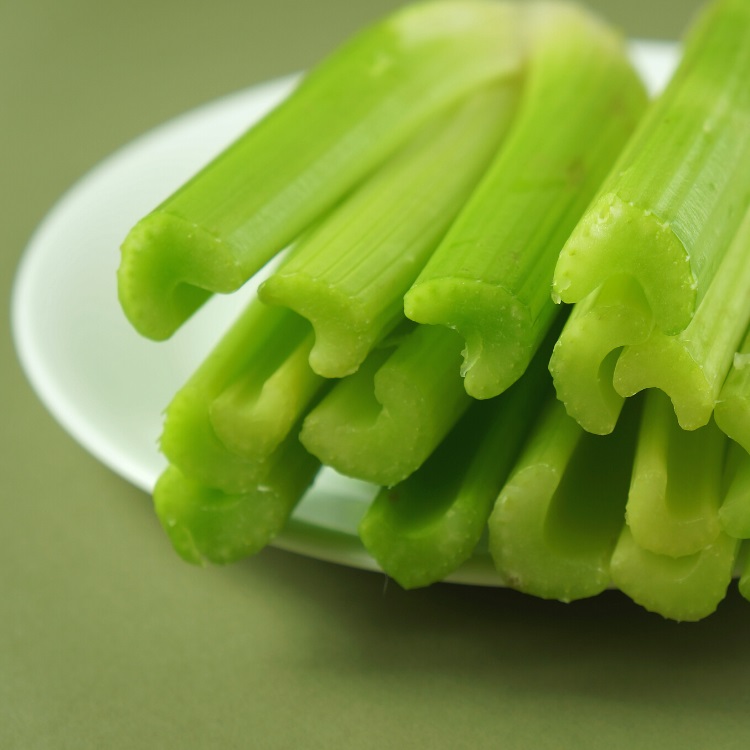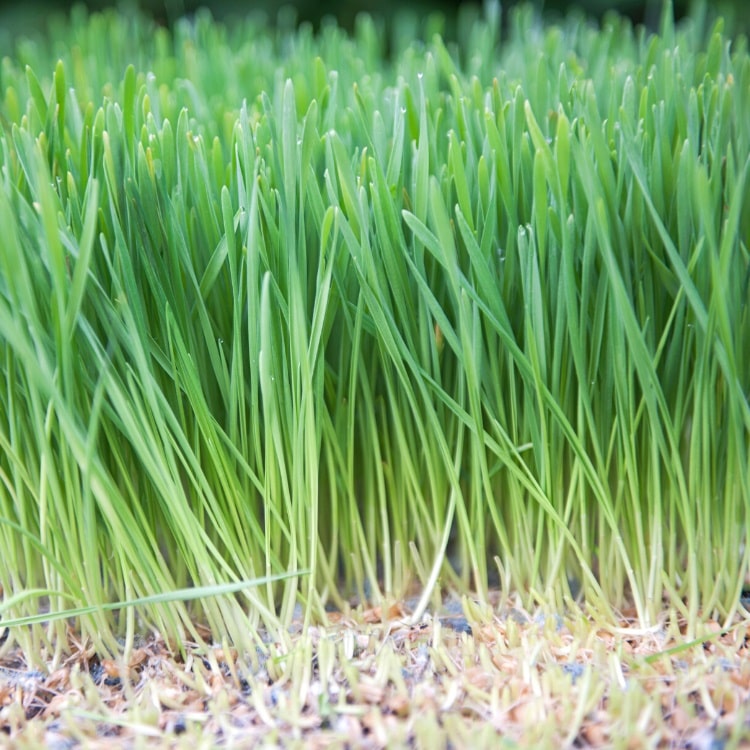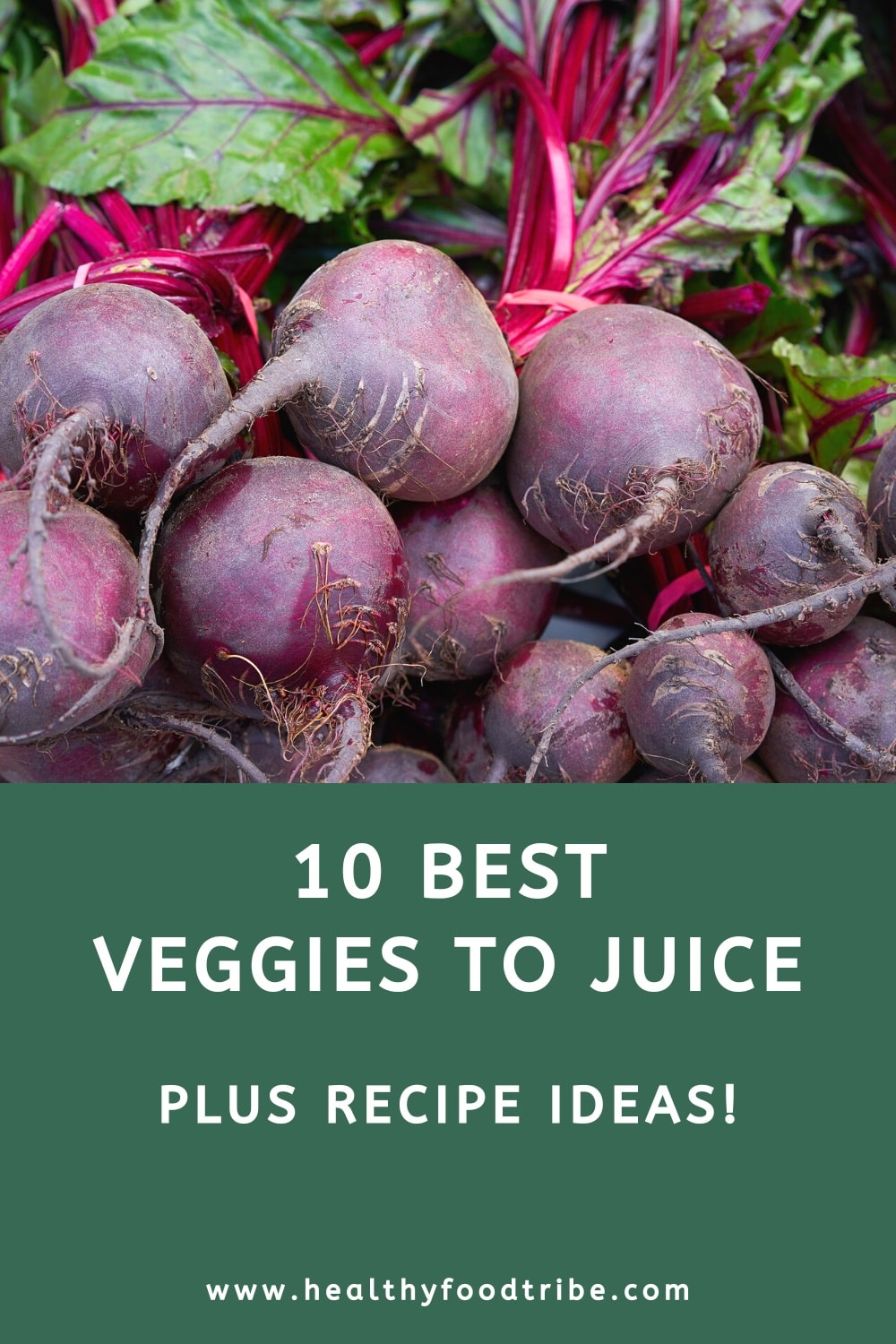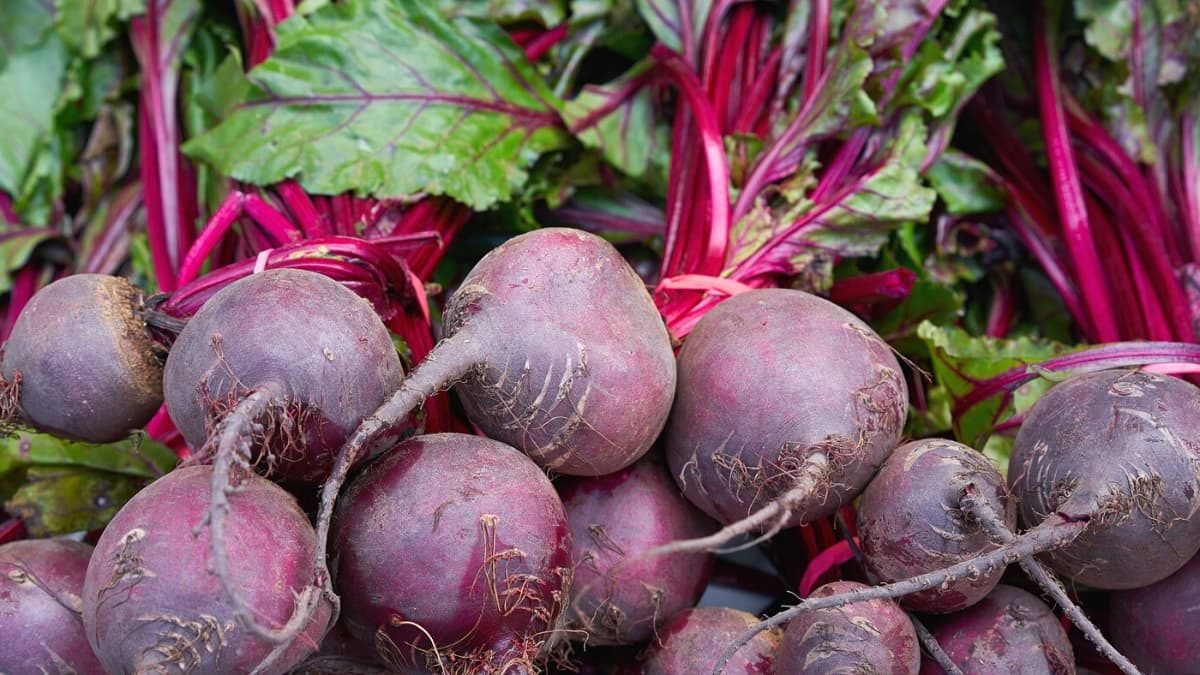Last updated: January 26, 2024
This guide explores the ten best veggies for juicing, considering water content, texture, nutritional benefits, and flavors.
Juicing vegetables is a great way to take advantage of the nutrients some veggies have to offer. But not all greens are good candidates for juicing. Some don’t contain enough water content, others don’t have the right texture or flavors, and some can’t be consumed raw.
As I’ve been juicing for many years, I have a shortlist of vegetables that are most suitable for juicing. The flavor, texture, and nutrient profile of these veggies make them easy to work with and adaptable to various recipes.
Below are 10 of the best vegetables to juice, including practical recipe tips and other valuable things to know to create the best juices without issues.
Looking to buy a new juicer? Read my guide to the best centrifugal juicers for reviews of models in different price ranges.
1. Beets

Beets have a deep, earthy flavor that many people find off-putting. But they are also sweet and loaded with phytochemicals that we could all use more of in our diets. Both these characteristics make them great candidates for juicing.
The juice of this purple vegetable (or bright red) is loaded with folate, manganese, copper, and more. In fact, they have at least trace amounts of almost every vitamin and mineral your body needs. And that rich color is a telltale sign that these root veggies are brimming with antioxidants.
To mellow their earthiness, I recommend juicing beets with brightly flavored ingredients like green apples, ginger, and cucumber. Because they’re so sweet on their own, avoid other sweet vegetables like carrots and parsley. Instead, opt for something sour or bitter, like lemons, limes, or greens.
2. Carrots

Carrots are another root veggie packed with plenty of juice and a surprising dose of sweetness. If you’re trying to juice only vegetables and use fewer fruits, they make a great option for sweetening bitter or sour vegetable blends.
These orange roots are full of valuable nutrients, including vitamins A, C, K, and potassium. Carrots have a mild but sweet flavor that mixes well with many other veggies. They also produce a surprising amount of juice, which makes them a highly useful (and affordable) base for many different recipes.
My favorite carrot juice recipe consists of carrots, ginger, oranges, and lemon. I also blend carrots, and this carrot spinach smoothie is one of my favorites.
3. Celery

Celery can be a tricky vegetable to eat, but for juicing, it is absolutely worth including in your mixes. It produces a fairly neutral, slightly grassy-flavored juice. The taste is easily overwhelmed by bolder ingredients, but the nutrients it brings to the table can stand on their own.
This stringy green vegetable is rich in many minerals, including copper, calcium, magnesium, and zinc. It contains a long list of vitamins and is an especially good source of vitamin K. It is low in sugar, high in water, and has a surprising amount of antioxidants for a pale-colored veggie.
I like to sneak a little celery into just about every juice I make. It adds valuable liquid to help the juice go further and is mild enough to not change the flavor of most recipes.
4. Chard

Swiss chard, like collard greens, is a thick leafy green that offers more liquid per leaf than other greens options. This makes it a more effective juicing green. The colorful stalks also add an extra dose of flavonoids that kale and spinach lack.
Chard is rich in vitamins A and C, and is loaded with antioxidants. Like other greens, it has a bit of a grassy flavor. But this flavor is less intense and slightly sweeter than more popular juicing green options.
This characteristic makes it easier to blend chard into various recipes. It pairs best with slightly sweet, bold flavors, like apples, carrots, and ginger.
5. Cucumber

Cucumber is one of my all-time favorite vegetables to include in juice recipes, even more so than carrots and celery. It has a bland flavor that is easily overshadowed, and it produces even more juice per cup than those water-logged vegetables.
Besides being a good vegetable for juicing, cucumbers also add a decent amount of nutrients to the mix. This veggie (but actually, it’s a fruit) is loaded with vitamins K and C, magnesium, manganese, and potassium.
Cucumbers are about 96% water, which means you can add a lot of volume to your juice by using cucumbers. They make a great base for low-juice vegetables like greens and herbs. If you’re looking for a simple, refreshing drink (or hangover cure), juice cucumbers with pineapple, ginger, and lemon.
6. Ginger

Ginger doesn’t strike most as a vegetable that could be juiced, given how little liquid it appears to have inside it. But with a powerful enough juicer, it is possible to squeeze some valuable juice out of this root. And given all the benefits this veggie has, both nutritionally and flavor-wise, it is worth including in your juicing routine.
A palm-sized chunk of ginger will produce about a thimble full of juice, if you’re lucky. But that tiny bit of spicy sweetness is packed with beneficial nutrients that you won’t easily find in other vegetables.
Flavor-wise, ginger provides a concentrated shot of sinus-clearing spice that can help balance the sweet earthiness of other veggies. It pairs especially well with citrus, carrots, apples, and other produce with sweet or tart flavors.
Struggling to keep ginger fresh? Read my guide with storage tips to keep ginger fresh with some practical tips to make the most of your ginger roots.
7. Kale

Of all the greens, kale is routinely celebrated as offering the most in terms of nutrition. But, for many, eating kale is a bit of a chore. Luckily, including it in your juice is easy enough to do.
Unsurprisingly, like other dark leafy greens, kale is packed with vitamins and minerals. Juiced kale is slightly grassy and bitter, but that flavor is easy to hide by mixing it with tart, sweet or sour vegetables and fruits.
Try mixing kale, apples, cucumbers, and lemon for a bright and nutritious pick-me-up drink, perfect for in the morning.
8. Parsley

Parsley, much like cilantro, is a wonderful herb to include in your juicing routine. It also has a bright, earthy, slightly peppery taste that can add some much-needed character to many juice recipes.
It has many of the same nutritional benefits as other dark greens. However, getting enough parsley to take advantage of those vitamins and minerals is hard when using it strictly as a garnish or spice. Juicing is a better option to benefit from all parsley has to offer.
Juicing this fine-leafed herb is easy if you have a masticating juicer. If not, I recommend cutting a cucumber nearly in half lengthwise, stuffing it with parsley, and then juicing the whole thing as one piece. The cucumber keeps the parsley from getting tossed out by the blades to secure more of that juice.
Read my masticating vs centrifugal juicer guide for an outline of the core differences between these two types of juicers.
9. Spinach

Spinach is another great leafy green to include in your morning juice. It is loaded with vitamins, minerals, and antioxidants that your body needs to function at its best.
It has an earthy yet familiar flavor that is easy to complement using some other healthy produce options. I like to pair spinach with something tart to cut down on the bitter aspects of it.
Berries, green apples, and lemons all work well. Like parsley, spinach is best juiced using a masticator, or by pinning it between heavy produce, so the blades don’t toss the leaves out before they’ve been pulverized.
10. Wheatgrass

Wheatgrass juice was a health craze even before general vegetable juicing became popular. That’s because wheatgrass contains an impressive array of minerals, including iron, in addition to 17 amino acids.
This dense green is often juiced into single-serving shots with a bitter, earthy flavor. If you don’t feel like forcing back your daily dose of wheatgrass, I recommend pairing it with lemon or orange juice. It can also be added in small quantities to your favorite recipes for a super nutrition boost.
Like other fine greens, you’ll get the most liquid out of your wheatgrass if you use a masticating juicer.
Looking to replace your morning coffee with a refreshing juice? Check out my list of breakfast juice recipes for some inspiration.

